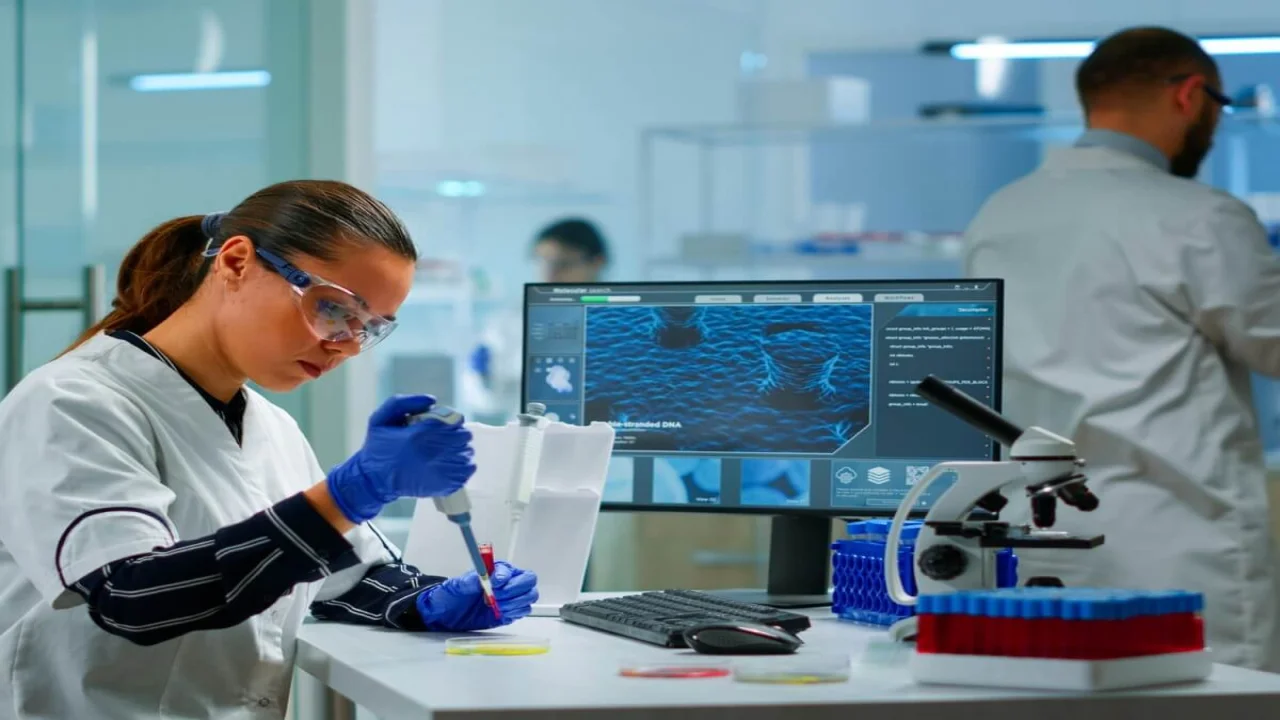Laboratory Tests in Bleeding Disorders
Bleeding disorders are the result of a generalized defect in hemostasis due to abnormalities of blood vessels, platelets, or coagulation factors.

Hemostasis or haemostasis (from the Ancient Greek: αἱμόστασις haimóstasis "styptic (drug)") is a process which causes bleeding to stop, meaning to keep blood within a damaged blood vessel (the opposite of hemostasis is hemorrhage). It is the first stage of wound healing. This involves blood changing from a liquid to a gel. Intact blood vessels are central to moderating blood's tendency to clot. The endothelial cells of intact vessels prevent blood clotting with a heparin-like molecule and thrombomodulin and prevent platelet aggregation with nitric oxide and prostacyclin. When endothelial injury occurs, the endothelial cells stop secretion of coagulation and aggregation inhibitors and instead secrete von Willebrand factor which initiate the maintenance of hemostasis after injury. Hemostasis has three major steps: 1) vasoconstriction, 2) temporary blockage of a break by a platelet plug, and 3) blood coagulation, or formation of a fibrin clot. These processes seal the hole until tissues are repaired.
Bleeding disorders are the result of a generalized defect in hemostasis due to abnormalities of blood vessels, platelets, or coagulation factors.
Initial tests, which should be performed in a suspected bleeding disorder, are complete blood count including blood smear, platelet count, bleeding time, clotting time, prothrombin time, and activated partial thromboplastin time. Depending on the results of these screening tests, one or more specific tests are carried out for definitive diagnosis (e.g. platelet function studies, assays of coagulation factors, and test for fibrin degradation products). Abnormalities of blood vessels are usually not detectable by laboratory tests for hemostasis, and their diagnosis requires correlation of clinical and other investigations.
SCRENNING TESTS FOR HEMOSTASIS
- Complete Blood Count including Blood Smear. A complete blood count and a blood smear can provide information in the form of:
- Presence of cytopenia (anemia, leukopenia, thrombocytopenia)
- Red cell abnormalities (especially fragmented red cells which may indicate disseminated intravascular coagulation)
- White cell abnormalities (like abnormal cells in leukemias)
- Abnormalities of platelets: thrombocytopenia (normally there is 1 platelets per 500-1000 red cells), giant platelets (seen in myeloproliferative disorders and Bernard-Soulier syndrome), and isolated discrete platelets without clumping in finger-prick smear (seen in uremia, Glanzmann’s thrombasthenia).
- Platelet Count
- Bleeding Time (BT)
- Clotting Time (CT)
- Prothrombin Time (PT)
- Activated Partial Thromboplastin Time (APTT)
- Thrombin Time (TT)
- Platelet Function Analyzer-100
The information on this page is peer reviewed by a qualified editorial review board member. Learn more about us and our editorial process.
Last reviewed on .
Article history
- Latest version
Cite this page:
- Comment
- Posted by Dayyal Dungrela